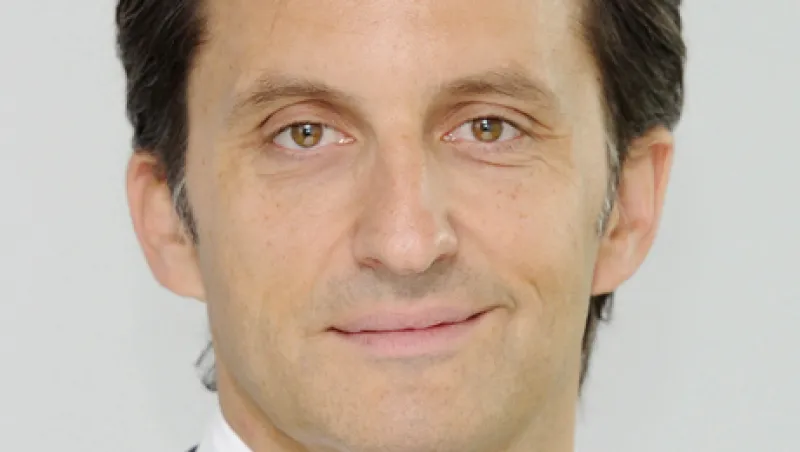Martin Keller knows alternative investments — particularly hedge funds. The head of Credit Suisse’s asset management division for Europe, the Middle East and Africa was previously global head of hedge fund investments at Deutsche Bank and then spent three years at London-based hedge fund behemoth Man Investments, where he was responsible for the firm’s institutional business before joining Credit Suisse. Having taken on his new role with the bank’s asset management group in May 2011, Keller, 44, is now working with the institutional clients to help them navigate the extraordinary challenges posed by the current high-risk, low-yield investment environment. He recently spoke with London Bureau Chief Loch Adamson about designing effective portfolio strategies in the midst of the euro zone’s protracted sovereign debt crisis.
1. How does sustained political and market instability affect asset allocation?
It is a huge dilemma. From an asset allocator’s perspective — particularly if you are liability-driven — you need higher returns. Investors in Europe are being tested by the changing political landscape; harsh economic, market and regulatory conditions; profound demographic shifts; and an aging population. And if you combine all of those factors with the sovereign debt issues out there, you need much higher investment returns to meet future liabilities, particularly in the case of pension funds. There is also no such thing anymore as a risk-free return, and that is one conundrum that investors need to try and resolve.
2. How should investors tackle that challenge?
What this requires is really a fundamental change in asset allocation views. Traditional buy and hold simply no longer works. If you consider this dilemma and look at the risks out there — including volatility and market uncertainty — I think we are in a phase now that is going to stay with us for a long time. It is highly unlikely that we’re going to see a quick end to this crisis and a return to the world we once knew. Investors really have to think about preserving capital and avoiding losses. We’ve seen a number of investors implementing a barbell strategy. They’re investing in more opportunistic, dynamic investment strategies, such as alternative investments, and reducing their beta exposure to core investments, which are more easily implemented through relatively cheap products like ETFs and indexes.
3. What can investors do if they’re constrained by current regulation?
Although limitations do exist, alternatives are still a relatively new phenomenon for many conservative investors who may not have reached their own regulatory limits. They still have room, and we expect to see accelerating fund flows toward opportunistic, dynamic and actively managed alternative investment strategies. Investors are also taking direct action. In the EU, for example, Solvency II (an EU directive enacted in 2009 to codify and harmonize insurance regulation) makes alternative investments unattractive for insurance companies from an equity capital-weighting perspective. Yet we still see a lot of insurance companies increasing their allocations in spite of the regulatory complexities and investing in systems that provide greater transparency in order to get more effective capital treatment. So the underlying forces and underlying logic of increasing allocations to alternative investments is so strong that I think regulatory boundaries will have to be addressed or adjusted.
4. How could the sovereign debt crisis in Europe impact investor behavior in the years to come?
People have to come to terms with a major paradigm shift — the world is changing. This raises a question mark for investors because you cannot assume that the world will go back to what it used to be. We are entering what will probably be a very prolonged phase of low or even negative growth. Growth is likely to be in new and emerging markets, not in developed Europe, and that will require a fundamental change in asset allocation from a particularly European-focused vantage point to more emerging-markets exposure — and a focus on allocating money where there are growth opportunities, such as infrastructure. You have to shift away from old models where you could invest on your doorstep, and look beyond and put money where it will see growth.
5. Should investors adjust their return expectations, too?
Yes, because you cannot expect the same return numbers going forward. Internal rates of return are simply not going to be what they once were. Investors have to realize that in the absence of risk-free investments, risk — by design — will have to go up substantially to achieve the same level of return. In that event, return levels will obviously come down. Whether you are a private or institutional investor, whether you are liability-driven or an unconstrained asset allocator, you have to factor in higher risk and lower returns, and that is a very unpleasant thought. Prozac, anyone?






